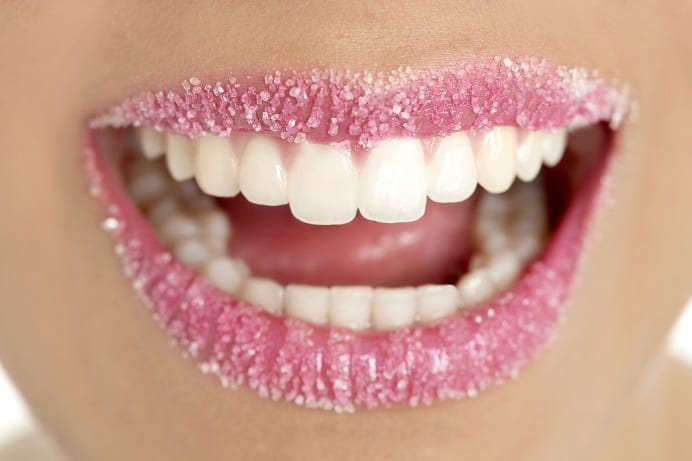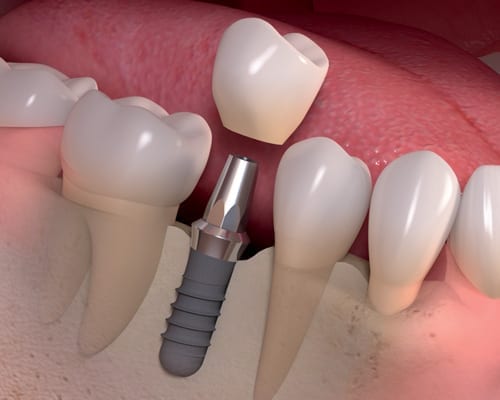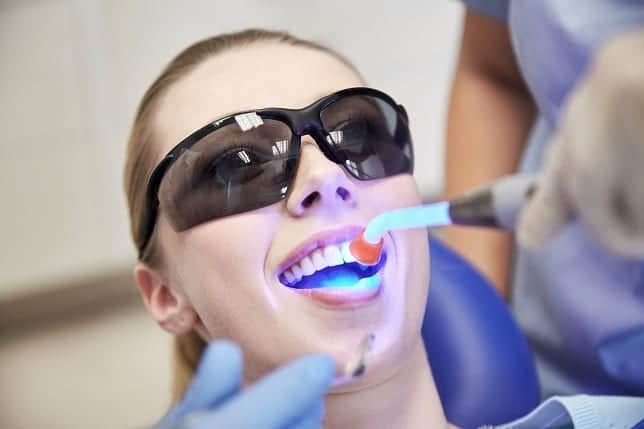Any dental work that improves the appearance—but not necessarily the functionality—of your bite, gums, and teeth is referred to as cosmetic dentistry. This branch of dentistry focuses on improving the aesthetics or beauty of your teeth’s alignment, shape, position, size, and color, as well as your overall smile quality. Many dentists consider themselves as cosmetic dentists regardless of their experience, training, specialty, and specific education. After all, all of them are trained to care for teeth, including the front teeth, which are considered most important aesthetically.
The American Dental Association or ADA doesn’t recognize cosmetic dentistry as a “real” specialty. It’s almost as if being a cosmetic dentist is some sort of gimmick or marketing ploy, but many dentists still promote themselves as cosmetic dentists regardless.
Cosmetic Dentistry Services Overview
Cosmetic dentists are usually known for their ability to sculpt, reshape, or whiten your teeth as well as bond teeth prosthetics/veneers over them in one office visit. They can even do something about your gums so that they can appear pinker and healthier than ever before.
At any rate, the most common cosmetic dentistry options include the following:
- Additional Dental Material: Cosmetic dentistry can involve adding dental material to your gums or teeth, which can include gum grafts, crowns or caps, porcelain veneers or laminates, and bonding dental composite material.
- Dental Material Removal: Cosmetic dentists can also remove gums and tooth structure for aesthetic or health purposes. Examples of such include enameloplasty (shaving off enamel) and gingivectomy (removing parts of the gums).
- Bleaching and Depigmentation: Cosmetic dentists can also improve the appearance of your gums and tooth structure by changing its color and appearance, as in the case of gum depigmentation, laser whitening, and dental bleaching.
- Teeth Straightening and Bite Improvement: A good example of cosmetic dentists improving the appearance of your face by straightening your teeth is orthodontics or installing braces in order to correct crookedness and bite (getting rid of your overbite or underbite).
Teeth Straightening

Orthodontics can correct dental misalignment but they’re not exactly aesthetically pleasing. The cosmetic dentistry answer to metal braces is the product known as Invisalign. This dental brace alternative is known in treating overlapping, crowding, or spacing teeth properly to create a straighter smile without looking so visible.
They’re braces that are practically invisible or at least camouflaged at a glance until further inspection is done. It’s a system used to treat patients of all ages without showcasing the childhood “brace-face” or “metal-mouth” look. It’s been around for more than a decade and they’re known to be easy to clean, invisible, and comfortable clear aligners.
Teeth Whitening or Bleaching
The most common cosmetic dental procedure most associated with cosmetic dentistry is teeth bleaching or whitening. When undergoing this procedure, the dentist will first evaluate the color of your teeth and the quality of your smile to determine if you’re a good whitening candidate or not.
- Is Teeth Whitening for You? Whitening is an easy, safe, and fast process that’s effective in making almost anyone’s smile gleam. However, there are cases wherein other cosmetic procedures may better meet your needs for a whiter smile such as prosthodontics.
- Bleaching Chemical: With regular whitening via bleach, the chemical is merely applied to teeth until it lightens its color to the right shade then washed away safely. Meanwhile, laser whitening activates the bleaching chemical, making it seven times more effective than using the chemical alone.
- Laser Whitening: Laser whitening is the method that involves the use of an argon laser beam. It’s supposed to accelerate the bleaching process by projecting the beam unto the teeth that already has bleaching chemical (usually peroxide) applied to it. Meanwhile, the gums are protected with a rubber dam.
- Dentist Supervision Is Still The Best Option: Even though over-the-counter or OTC products are widely available to meet your dental bleaching needs (such as whitening strips or home-based whitening trays), treatments supervised by dentists remain the most highly recommended procedure for lightening teeth that have become yellowed or discolored.
Bite Reclamation
You might be in need of the cosmetic dentistry service known as bite reclamation if you suffer from an altered bite on the vertical dimension due to acid reflux or grinding (bruxism). Such circumstances tend to give you shorter or more closed look on your smile and face.
The service is supposed to help you reclaim your former bite or improve your bite in a way that doesn’t grind your teeth down to give you an underbite or overbite. You can reclaim the vertical dimension by having a cosmetic dentist open up your bite.
Reshaping

Cosmetic dentists can also go about reshaping your misshapen teeth by strategically removing parts of the enamel in ways that improve tooth appearance and aesthetics when all is said and done. It’s useful in correcting small chips or cracks without putting in resin to cement your teeth. Here are other things to remember:
- Other Names: Reshaping is also known as odontoplasty, enameloplasty, stripping, slenderizing, and recontouring.
- Orthodontics Alternative: You can use reshaping as a means to fix teeth positioning, thus making it an alternative for braces in certain situations.
- Alterations: If you have teeth that are crooked, bent, or too long, you can use this service to change the position, shape, or length of your teeth.
- Adjustments: You can also have a dentist reshape your teeth to make them more even in case you’re dealing with teeth size discrepancies.
- Irreplaceable: Fair warning though. Remember that once enamel is removed, you can’t replace it—tooth filling material is weaker than enamel—and it may expose dentin at times.
Bonding
You can also bond an enamel-like dental composite material to your tooth’s surface like cement in order to fix cracks by sculpting it to shape, letting it harden, and then polishing its rough edges to a nice shine.
You can use the bonding substance on onlays and inlays in order to repair teeth that have been decayed or cracked. If using teeth filling is too small to correct the decayed teeth, you can instead use bonding material to fix the tooth before opting for crown placement.
Bridging
If you wish to replace one or more missing teeth without resorting to putting in a dental implant on the empty socket where the tooth or teeth used to be, then you should look into getting a dental bridge instead. Like crowns, the average bridge lasts nearly a decade or ten years of use, maybe more, before requiring replacement.
- Missing Teeth Replacement: Dental bridges look like real road bridges in that they’re false teeth suspended over the gums while supported by either real teeth or dental implants to replace missing teeth.
- Composition: A dental bridge is made up of the missing, false teeth known as pontics, the teeth or implant prepped for bridge support and cap placement, and abutments that really stick the bridge unto the teeth.
- Dental Cement: Dental cement is used in order to really stick in the bridge that double as the denture unto the existing prepped teeth to fill in the gaps of your missing tooth or teeth.
- How Many Teeth? Bridges can extend or consist of more than three teeth in total. However, in order to replace a whole row of teeth, you might need more existing teeth to support two bridges or an All-on-4 dental implant.
- Ante’s Law: The viability of any dental bridge is usually determined by the application of Ante’s Law in order to assess where in the mouth the missing teeth should be.
- Fixed Bridges: Most bridges are fixed or permanent, which means you cannot remove them. You can’t take them out like partial dentures, which is part of the point of getting them.
- Cantilever Bridge: There’s also a type of dental bridge known as the cantilever or Maryland bridge that hangs over the empty tooth socket while supported by only one tooth or post, just like a real cantilever road bridge.
- When to Use Cantilever: The cantilever bridge is used in the parts of the mouth where there’s less stress, like the front or anterior teeth. They’re minimally invasive compared to normal bridges but might fail because it only uses one teeth for support.
- Oral Hygiene for Bridges: You need special floss in order to clean bridges, particularly the gums underneath them. You should be committed to oral hygiene when maintaining them because they carry infection risk if you don’t.
Gum Lifts and Grafts
There’s a facelift for gums and it’s called the gum lift. Like the facelift, the dental or gingival surgeon is supposed to lift the gingival up or sculpt it to make your smile look better or become less gummy.
This procedure can include gum grafts or grafting gum tissue to your existing gum to add to it, reshaping the tissue, and adjusting the underlying bones in order to create the appearance of more symmetrical teeth care of a similarly symmetrical gum line.
Veneers
Veneers or laminates are ultra-thin front-facing caps you bond directly to the teeth in order to make them whiter and straighter than before. To prep your tooth for lamination or putting on veneers, an anatomic wax mockup is fabricated first as the dentist’s guide for the size and shape of the laminates.
- Veneer Application: Veneers are best applied for use in order to change the color of your teeth that cannot be bleached by whitening procedures, enhance their shape, or close the gaps between them.
- Tooth Reduction: Usually, a measure of enamel removal or reshaping is required in order to give you an optimal fit for your veneers. This isn’t always the case but the majority of veneer treatments need enameloplasty.
- Mockups and Fabrication: A mockup is required in order to act as the tooth preparation guide for the veneers in order to achieve the best results possible. The mockup is based on your current teeth and will be used to guide veneer fabrication.
- Pre-Evaluation Temporaries: Before the final veneers are made using the mockup, pre-evaluation temporaries might be first made to give the dentist a preview to the teeth occlusion, phonetics, and aesthetics of the laminates. They’re the veneer mockups placed unto the patient’s oral mockup.
- Visualization: The dentist uses the mockup to visualize changes required to be done on the teeth in respect to proportion, shape, and size as related to the smile line as well as lip and gingival contour. A mockup also helps clinicians correct the laminate size and shape as needed.
Implants

Dental implants are prosthetic tooth roots in order to make sure the dentures for missing teeth feel like natural teeth with their own solid foundations. They’re effective in making sure you won’t lose your cap or crown so easily like with removal dentures.
According to the International Congress of Oral Implantologists (ICOI), there are 3 parts of the implant, which include the titanium implant or post that is implanted unto the bone, the abutment, and the dental crown, bridge, or denture connected solidly to the protruding part of the implant via abutment.
Dental Materials
Dental fillings used to be made of metals like gold or an amalgam of them combined with mercury. Some might even be veneered with porcelain for good measure. At present, dental work can be made with composite materials that mimic the natural tooth appearance or porcelain that can do the same thing but be much tougher.
Having tooth-colored materials fulfills the cosmetic part of cosmetic dentistry versus dental restorations that stick out more. They’re typically bonded to the underlying imperfect teeth structures with resin adhesives. Unlike amalgam or silver fillings, these fillings are mercury-fee.
Is Cosmetic Dentistry Really a Thing?
There isn’t as big of a divide between regular dentists and cosmetic dentists compared to regular surgeons and cosmetic surgeons. This is because many regular dental operations don’t only improve teeth health and integrity but also their appearance. The whiteness and plaque-free appearance of teeth is a priority for “both” types of dentist. Only teeth bleaching can be considered as strictly done for aesthetics.
This is considered as unethical false advertising since a cosmetic dentist should be a specialist in the field of dental aesthetics versus normal dentistry. However, many dentists who practice this deception argue that many general dentistry practitioner services such as tooth filling and dental prosthodontics all fall under the cosmetic dentistry umbrella as well. Many dentists also offer teeth bleaching due to high consumer demand, which is the service most associated with cosmetic dentistry.
Thantakit International Dental Center is Thailand’s longest established dental center. Situated in Bangkok, our clinic is renowned across the world as a destination for world-class dentistry, with most of our patients flying to us from Australia.
Please contact us today and get a FREE dental consultation.













